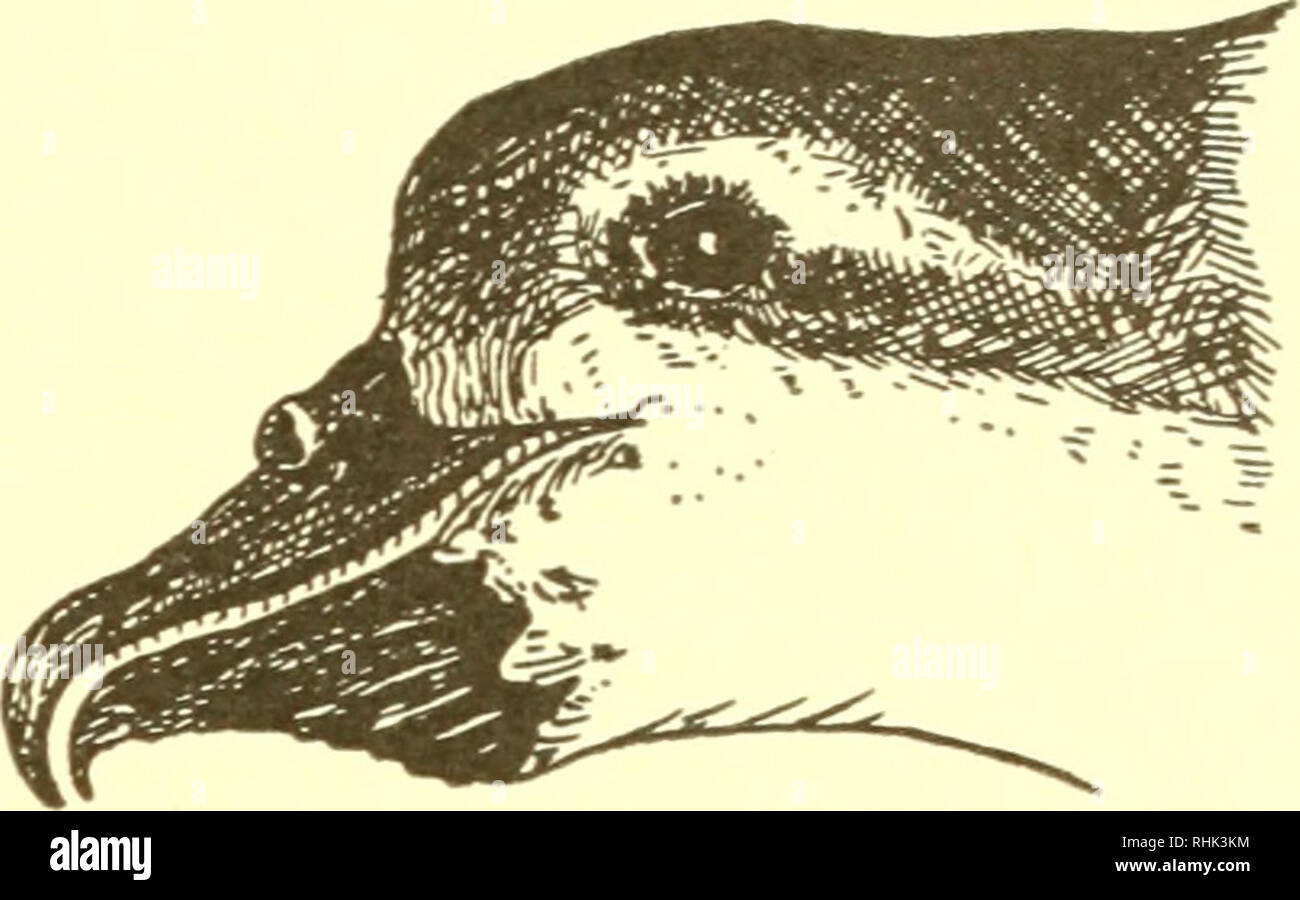. The biology of marine animals. Marine animals; Physiology, Comparative. Fig. 5.23. Head and Bill of the Broad-billed Prion Pachyptila forsteri (Left) a palatal view of the upper mandible, showing the baleen-like maxillary lamellae. (Right) view of the head, showing the extensible pouch. (From Murphy (78).) lower jaw is raised and the tongue elevated, water is forced out of the mouth cavity. The planktonic organisms which have been filtered off are left stranded on the tongue and are swallowed. The principal food of whalebone whales consists of larger species of plankton (krill). In the Antar

Image details
Contributor:
Library Book Collection / Alamy Stock PhotoImage ID:
RHK3KMFile size:
7.1 MB (224.3 KB Compressed download)Releases:
Model - no | Property - noDo I need a release?Dimensions:
2001 x 1248 px | 33.9 x 21.1 cm | 13.3 x 8.3 inches | 150dpiMore information:
This image is a public domain image, which means either that copyright has expired in the image or the copyright holder has waived their copyright. Alamy charges you a fee for access to the high resolution copy of the image.
This image could have imperfections as it’s either historical or reportage.
. The biology of marine animals. Marine animals; Physiology, Comparative. Fig. 5.23. Head and Bill of the Broad-billed Prion Pachyptila forsteri (Left) a palatal view of the upper mandible, showing the baleen-like maxillary lamellae. (Right) view of the head, showing the extensible pouch. (From Murphy (78).) lower jaw is raised and the tongue elevated, water is forced out of the mouth cavity. The planktonic organisms which have been filtered off are left stranded on the tongue and are swallowed. The principal food of whalebone whales consists of larger species of plankton (krill). In the Antarctic, blue, fin and humpback whales (Balaenop- tera and Megaptera) feed heavily and almost exclusively on the immense shoals of Euphausia superba which abound there; this is in the summer season. The majority of whales eat little in the winter, when they draw upon their reserves of fat. These are supplemented by small quantities of Crusta- cea and fish, captured in warmer waters of the Southern Hemisphere during the winter months. The staple food of blue and fin whales (Balae- nopterd) in the Northern Hemisphere is Meganyctiphanes norvegica during the summer. During the winter, fin and humpback whales consume some fish (clupeids (66)). MECHANISMS FOR DEALING WITH LARGE PARTICLES OR MASSES In this section are described methods for dealing with inactive food; for seizing prey, and mechanisms for scraping and boring in connexion with feeding. Ingestion of Inactive Food There are many benthic animals which swallow, with little selection, sand, mud or other bottom deposits, from which they extract organic. Please note that these images are extracted from scanned page images that may have been digitally enhanced for readability - coloration and appearance of these illustrations may not perfectly resemble the original work.. Nicol, J. A. Colin (Joseph Arthur Colin), 1915-. New York, Interscience Publishers